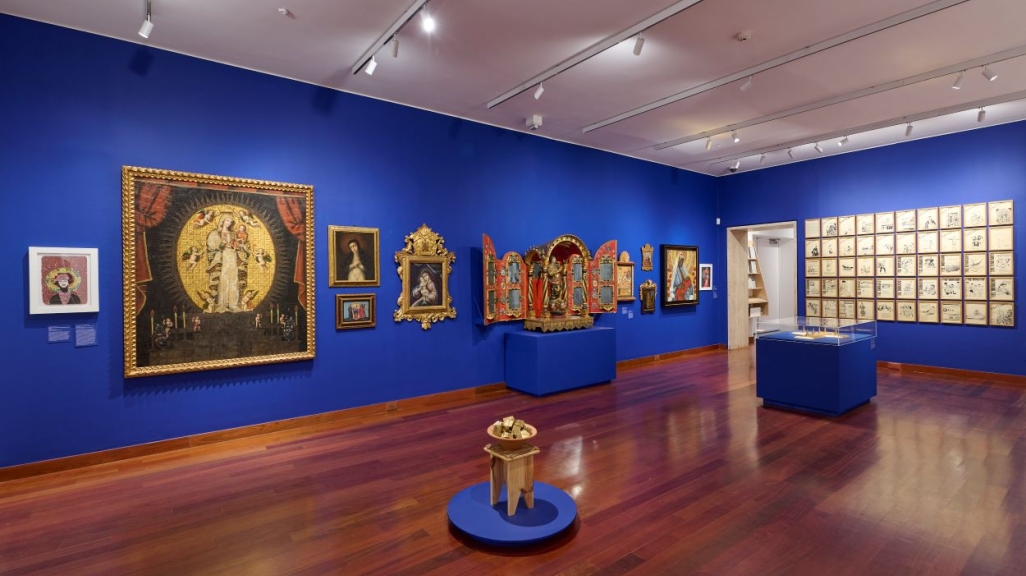Artforum Reviews Americas Society's exhibit El Dorado: Myths of Gold Part II
Artforum Reviews Americas Society's exhibit El Dorado: Myths of Gold Part II
The exhibition "was an ambitious attempt to explore this foundational legend and its profound and enduring impact on the Americas," says the art magazine.
Wide-ranging in its scholarly scope, “El Dorado: Myths of Gold” Part II was an ambitious attempt to explore this foundational legend and its profound and enduring impact on the Americas. The show was first conceptualized in 2020, when the Americas Society, Fundación Proa in Buenos Aires, and the Museo Amparo in Puebla, Mexico, joined efforts and convened a number of online information sessions that resulted in a series of exhibitions at each institution dealing with the theme. Featuring works by more than sixty artists, from the pre-Hispanic period to the contemporary era, the presentation here was divided into two iterations (the first took place in 2023).
The tale of El Dorado, a hidden kingdom of gold, not only spurred greedy European colonialist expansion that destroyed ancestral territories, endangered Indigenous lives, and wreaked environmental havoc, but also was largely responsible for the powerfully destructive materialist ethos that to this day continues to destabilize social, economic, and political structures in Latin America. One of the great strengths of this exhibition—curated by Tie Jojima, Aimé Iglesias Lukin, and Edward J. Sullivan—was that it brought examples of precolonial goldwork and colonial altarpieces, along with contemporary photography, sculpture, painting, video, and more, into a seamless installation that facilitated dialogues between historical time periods and locations. These uneasy proximities served to reveal and complicate the impact gold had, and still has, on particular communities, spurring a reevaluation of how the El Dorado story shaped personal and collective values.
As an introductory wall panel in the exhibition stated, “El Dorado is a tale of searches and quests, delirium, and violence.” Andrés Bedoya, whose horde of silver Moscas (Flies), 2022, appeared to be crawling around the wall text in the first gallery, provided an apt introduction. Although created from a different precious metal, this horrifying plague serves as a metaphor for the effects of gold mining on Bolivia from the sixteenth century until today. Nearby, a long case held a priceless array of precolonial gold pendants and plaques that were scrupulously embellished with an assortment of frogs, eagles, crocodiles, and deities. Although gold’s incorruptible brilliance led it to be appreciated and used ritually by many Indigenous cultures, the element was not valued, as the Spanish thought, for status and currency.









